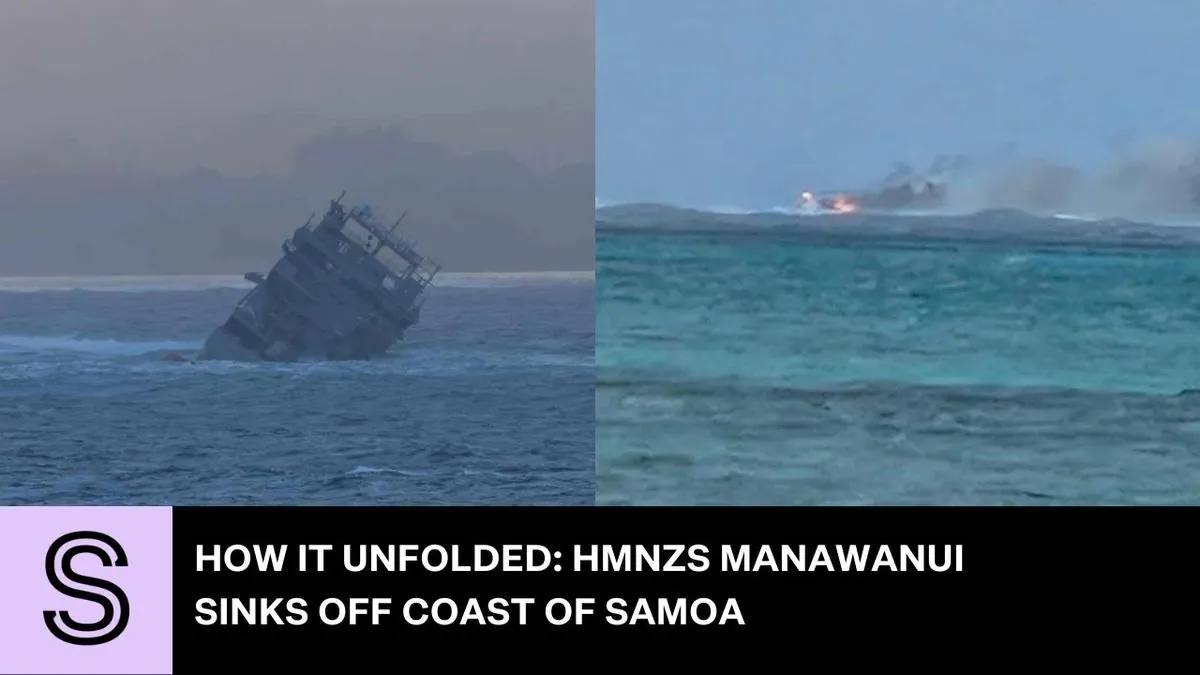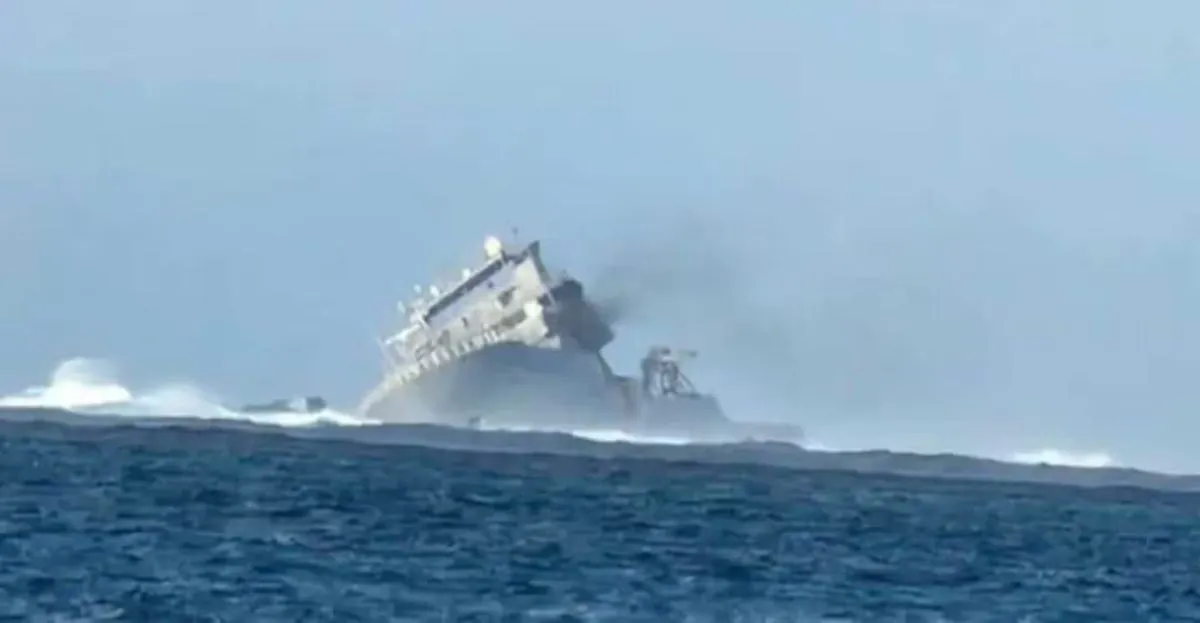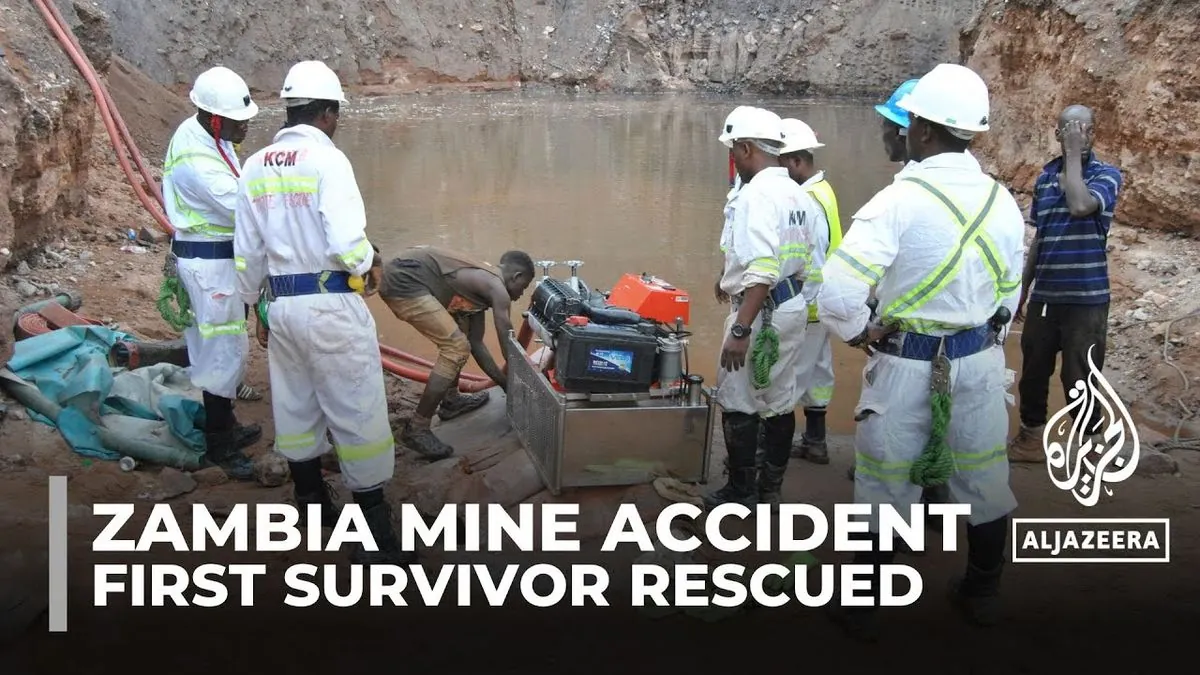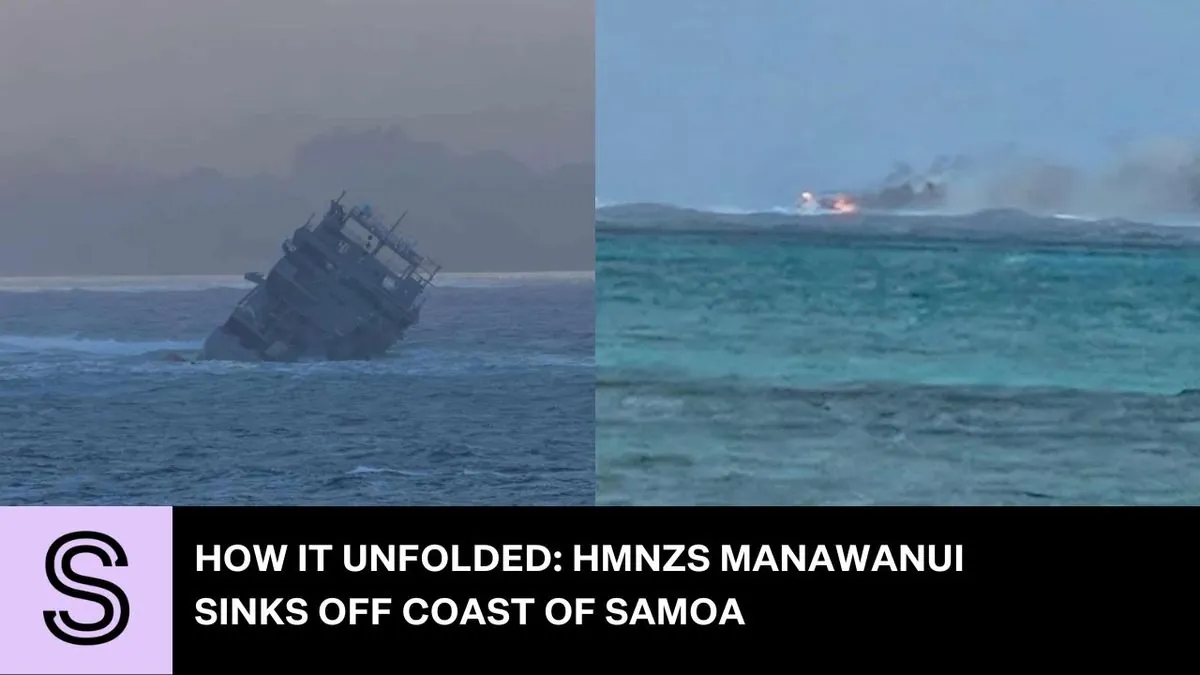NZ Navy Ship Sinks Off Samoa: Environmental Concerns Rise
HMNZS Manawanui sank near Samoa after running aground during a survey. All 75 crew members were safely evacuated, but potential oil spill threatens marine ecosystem.

On October 6, 2024, a Royal New Zealand Navy vessel sank approximately one mile from the Samoan coast, raising concerns about potential environmental repercussions. The HMNZS Manawanui, a specialized dive and hydrographic survey ship, encountered difficulties during a reef survey operation.
The incident occurred when the vessel ran aground near Upolu's southern coast on October 5. All 75 personnel aboard were safely evacuated using life rafts, with assistance from local rescuers. The cause of the accident remains under investigation by naval authorities.
Tuala Tevaga Iosefo Ponifasioacting, the acting Prime Minister of Samoa, stated that the ship was beyond recovery. He expressed serious concerns about the likelihood of an oil spill, prompting government agencies to initiate environmental impact assessments on the marine ecosystem.
Rear Admiral Garin Golding, chief of the New Zealand navy, emphasized their focus on supporting the Samoan Government in understanding and mitigating possible environmental impacts from the incident.
The HMNZS Manawanui, the fourth ship of the Royal New Zealand Navy to bear this name, was purpose-built for coastal and harbor surveys, search-and-recovery missions, and underwater explosive disposal. Interestingly, the ship's name "Manawanui" is a Māori word meaning "steadfast" or "big heart", reflecting its important role in the navy.

Originally constructed in Norway as a diving support vessel, the ship was acquired by the Royal New Zealand Navy in 2018 for approximately NZ$103 million, including refitting costs. It entered service in 2019, replacing two decommissioned vessels: HMNZS Resolution and the previous HMNZS Manawanui.
The vessel's impressive specifications include a length of 84.7 meters, a beam of 18 meters, and a draught of 6.3 meters. With a full load displacement of 5,741 tonnes, it can accommodate up to 39 core crew members and an additional 46 mission-specific personnel.
Equipped with advanced features such as a 100-ton salvage crane, a moonpool for underwater equipment deployment, and a flight deck for helicopter operations, the HMNZS Manawanui was designed to support diving operations down to 300 meters. Its dynamic positioning capabilities allowed for precise station-keeping during surveys and operations.
The ship's sinking process was rapid. Early on October 6, it began tilting to one side, with smoke visible from the vessel. Within three hours, it had completely capsized and sunk.
This incident occurred during the ship's third deployment to the South West Pacific in 2024. The HMNZS Manawanui had been at sea for just over a week and was scheduled to return to New Zealand on November 1, 2024.
As investigations continue and environmental assessments are underway, the incident serves as a reminder of the risks associated with maritime operations and the potential ecological impact of such events on fragile marine ecosystems.
"Grateful for the heroic rescue efforts that saved lives during the tragic sinking of the HMNZS Manawanui. Our thoughts are with the @NZNavy 75 brave souls who were aboard, and with the first responders from Samoa who acted swiftly in this difficult time. Kia kaha 🇺🇸 🇳🇿"
The loss of the HMNZS Manawanui is a significant blow to the Royal New Zealand Navy's operational capabilities in the South Pacific and Southern Ocean regions, where the vessel was designed to conduct extended operations. As efforts to assess and mitigate the environmental impact continue, the incident highlights the importance of maritime safety and environmental protection in naval operations.


































